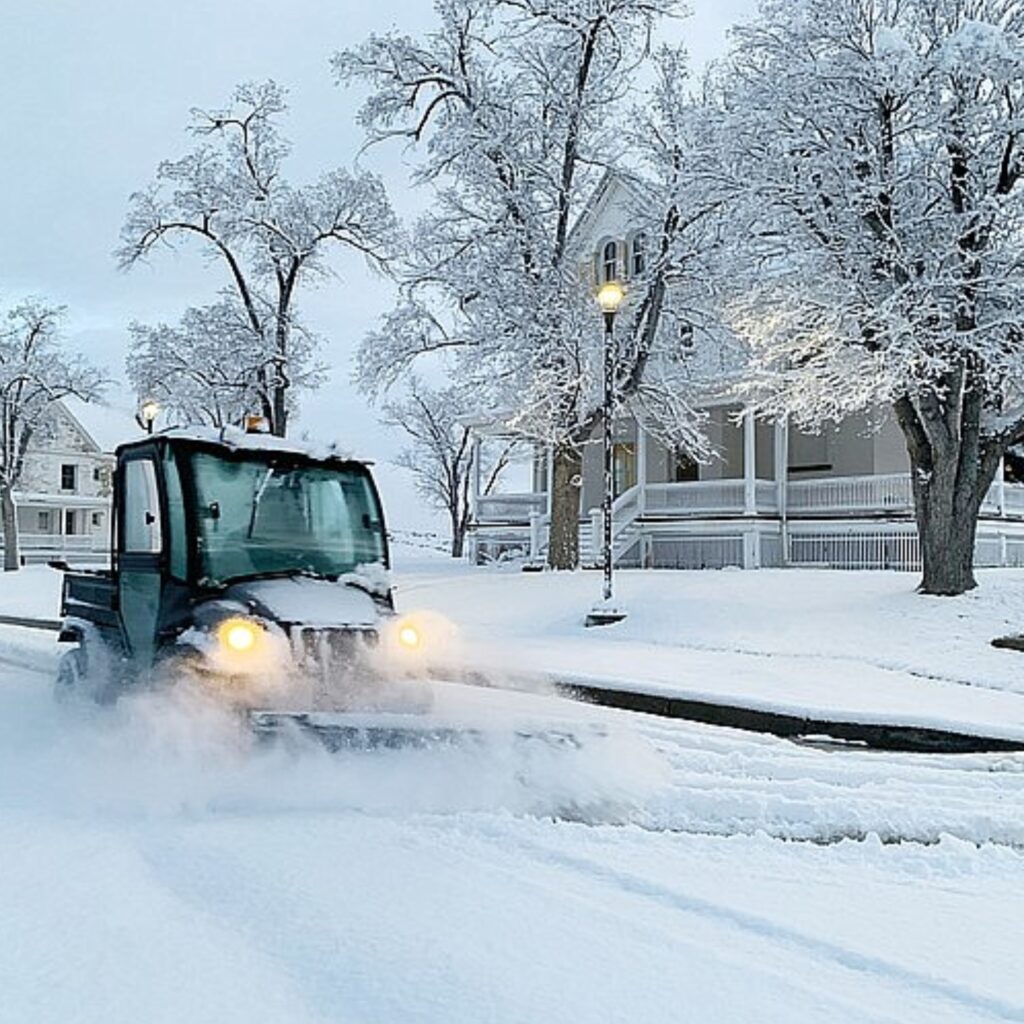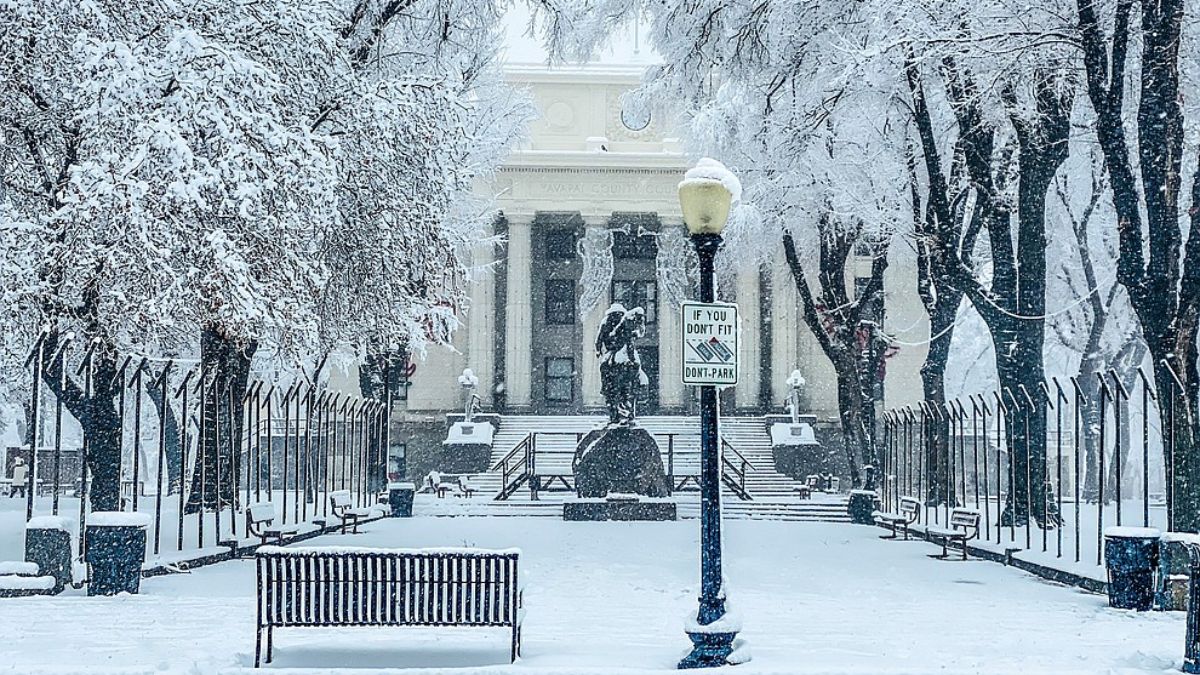Yes, it does snow in Prescott, Arizona. Prescott experiences a moderate amount of snowfall each year, with an average annual snowfall of around 20 inches. However, the amount of snowfall can vary from year to year. Some winters may see lighter snowfall, while others can bring heavier accumulations.
The snowy season in Prescott typically occurs between the months of November and April, with December and January being the peak months for winter precipitation. During this time, visitors and residents have the highest chance of witnessing snowfall and the transformation of the city into a winter wonderland.
Prescott, Arizona, is a charming city located in the state’s central highlands. Known for its historic downtown, scenic landscapes, and moderate climate, it attracts residents and visitors year-round.

While the region enjoys a mild and sunny climate for most of the year, one question often comes to mind: Does it snow in Prescott, AZ? In this article, we will delve into the winter weather patterns of Prescott and discover what locals and visitors can expect during the snowy season.
Location Overview
Prescott is located in the central part of the state, approximately 95 miles north of Phoenix. It is situated in Yavapai County and serves as the county seat. The city is nestled in the Bradshaw Mountains at an elevation of around 5,400 feet, contributing to its unique climate and scenic surroundings.
Prescott is known for its picturesque landscapes, with a mix of rugged mountains, pine forests, and open spaces. The city is surrounded by natural beauty, including the Prescott National Forest and Granite Mountain. These natural attractions make it a popular destination for outdoor enthusiasts.
Prescott’s location also offers convenient access to other notable destinations in Arizona. It is within driving distance of popular attractions like Sedona, the Grand Canyon, and Flagstaff.
Overall, Prescott’s location in central Arizona provides residents and visitors with a mix of natural beauty, outdoor recreational opportunities, and easy access to nearby attractions, making it an appealing destination in the state.
Geography and Climate of Prescott
The geographical location and climate of Prescott, Arizona, play a significant role in its snowfall patterns. Situated at an elevation of around 5,400 feet in the Bradshaw Mountains, Prescott experiences a unique climate compared to other parts of Arizona.
The higher elevation contributes to cooler temperatures, especially during the winter months. As a result, when weather systems bring precipitation to the region, it often falls as snow rather than rain.
The surrounding mountainous terrain also enhances the chances of snow accumulation. The combination of elevation and the nearby Prescott National Forest creates an environment where cold air masses can settle, allowing for snowfall and creating the potential for winter wonderland scenes in Prescott.
Prescott’s climate is often described as a high desert climate, characterized by warm summers, mild springs and autumns, and relatively cool winters. The city experiences cooler temperatures compared to lower-altitude areas in Arizona.
Historical Snowfall Record
Prescott receives an average annual snowfall of around 20 inches. However, this number can vary significantly from year to year. Some winters may see lighter snowfall, while others can bring heavier accumulations. On average, Prescott experiences approximately 11 days with measurable snowfall each year.
The historical snowfall record of Prescott, Arizona provides insight into the city’s past winter weather patterns. Here is an overview of some notable snowfall records in Prescott:
- In recent history, one of the most significant snow events in Prescott occurred in December 1967 when the city received a record-breaking snowfall of 36 inches over a four-day period. This remains the largest snowfall ever recorded in Prescott.
- Another notable snowfall event took place in December 1984, when a winter storm brought 25.5 inches of snow to the city. This event ranks as the second-highest snowfall on record in Prescott.
- In January 2010, a winter storm brought heavy snowfall, resulting in 23.6 inches of accumulation in the city. This event stands as the third-highest snowfall recorded in Prescott.
It is important to note that these records represent extreme snowfall events and do not necessarily reflect the average winter conditions in Prescott.
Winter Season & Snowfall Pattern
Contrary to the common perception of Arizona as a desert state with scorching summers, Prescott and its surrounding areas can receive snowfall during winter. The higher elevation and proximity to the Bradshaw and Sierra Prieta mountain ranges contribute to the occasional winter wonderland.
Winter weather in Prescott can be unpredictable. Snowstorms can arrive suddenly, blanketing the city and surrounding areas in a white landscape. The duration of snow cover can also vary, with some storms melting quickly and others leaving a lingering snowpack that persists for several days.
Locations to Enjoy Snow
Prescott, Arizona, and its surrounding areas offer several locations where visitors can enjoy the snow. Here are a few notable spots:
- Prescott National Forest
The vast Prescott National Forest provides ample opportunities for outdoor winter activities. Visitors can explore the forest’s trails, go snowshoeing, or cross-country skiing through the snowy landscape. Thumb Butte and Granite Mountain are popular destinations within the forest for winter recreation.
- Watson Lake
Located just four miles from downtown Prescott, Watson Lake is a scenic reservoir surrounded by stunning granite boulders. During the winter months, when the lake freezes over and is covered in snow, it creates a picturesque setting for winter photography and leisurely walks.
- Lynx Lake Recreation Area
Located in the Bradshaw Mountains, the Lynx Lake Recreation Area is a serene spot for winter recreation. Visitors can enjoy activities like ice fishing, snowshoeing, and hiking along the lakeshore while taking in the snowy vistas.
- Goldwater Lake
Goldwater Lake, situated a few miles south of Prescott, offers a tranquil winter setting. The lake is surrounded by pine trees, making it a peaceful spot for walking, snowshoeing, or simply enjoying the snowy scenery.
- Thumb Butte
As one of the iconic landmarks near Prescott, Thumb Butte is a popular destination for hikers and nature enthusiasts. During winter, the trails leading to Thumb Butte are transformed into scenic winter wonderlands, providing opportunities for snowshoeing and hiking in the snow.
These locations offer diverse opportunities to experience the beauty of snow in the Prescott area. It is important to check weather and trail conditions before visiting and come prepared with appropriate winter gear and equipment.
Factors Influencing Snowfall
Snowfall in Prescott, Arizona is influenced by various factors. The city’s elevation of plays a significant role. Higher elevations generally experience colder temperatures, favoring snow over rain.
Additionally, the geography of Prescott, nestled within the Bradshaw Mountains and near the Prescott National Forest, contributes to snowfall. The mountainous terrain can trap cold air masses, creating ideal conditions for snow formation and accumulation.
The movement of storm systems is another critical factor. Winter storms and low-pressure systems bring moisture and colder temperatures necessary for snowfall. Lastly, atmospheric conditions such as humidity, temperature, and wind patterns also impact snowfall.
When moisture-rich air, near or below-freezing temperatures, and favorable wind patterns coincide, snowfall becomes more likely in Prescott. These factors determine the amount and frequency of snowfall experienced in the region.
Conclusion
Although not as renowned for snowfall as some other regions in the United States, Prescott, AZ, does receive a fair amount of snow each year. With an average annual snowfall of around 20 inches, this charming city offers residents and visitors the chance to experience the beauty of winter.
So, if you are planning a trip to Prescott, check the weather forecast and pack your winter gear, as you just might enjoy a snowy adventure in this desert oasis.
